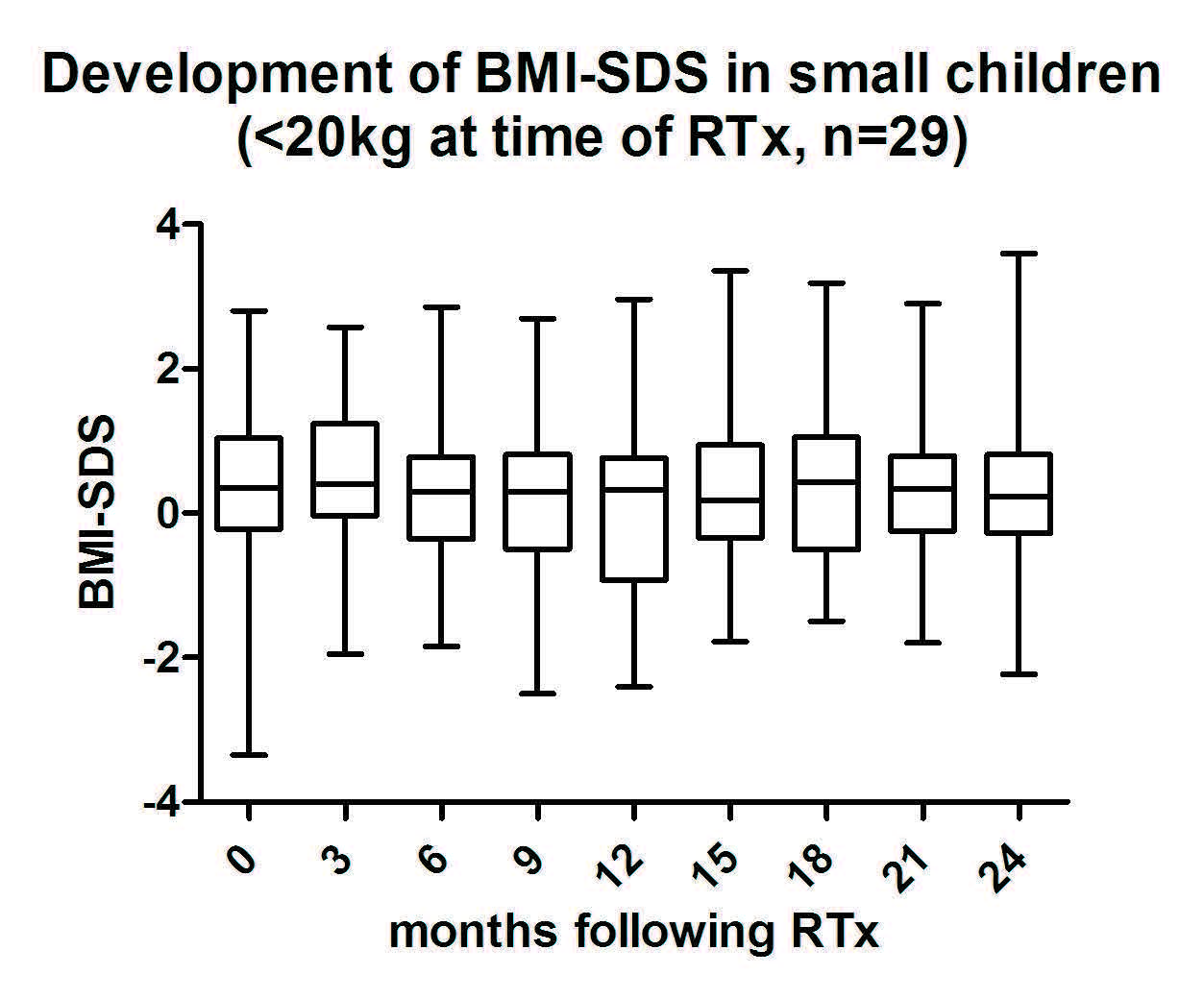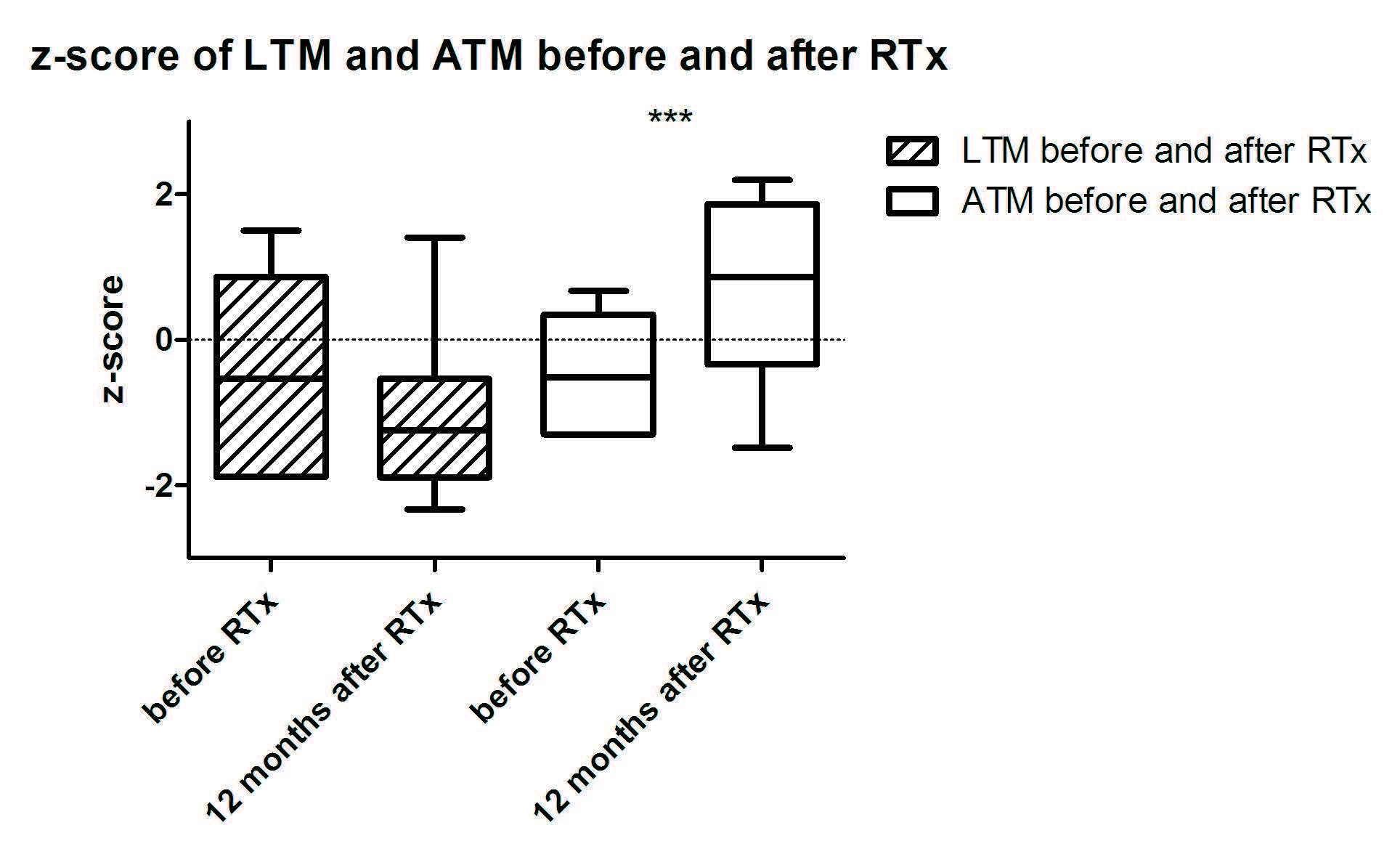Prof. of Pediatrics, Pediatric Nephrology and Transplant Medicine
Pediatric Nephrology
University Hospital Essen
Body composition monitoring in small children under 20 kg before and following renal transplantation
Rainer Büscher1, Johanna Bergerhausen1, Anja K Büscher1.
1Department of Pediatrics II, Pediatric Nephrology, University Hospital Essen, Essen, Germany
Introduction: Weight gain and other changes of body compositon are well described in adults and older children following renal transplanation (RTx) and are associated with poor outcomes, especially an increased risk for cardivascular disease. However, it is unknown so far whether smaller children undergo similar changes of body composition following RTx. The aim of our study was to analyze changes of body mass index (BMI), lean tissue mass (LTM) and adipose tissue mass (ATM) in small children weighing less than 20 kg at the time of RTx.
Methods: We included 29 small children (21 male) in this retrospective analysis who were transplanted in our hospital between 2018-2024. Mean age at time of RTx was 4.2+2.1 years (2-7 years) and mean weight 14.2+3.3 kg (8.1-19.2 kg). Besides other anthropometrical data, SDS-BMI was documented for up to two years following RTx in 3-months periods. In addition, we performed body compositition monitoring (BCM, Fresenius Medical Care) in 11 children before and within 12-15 months following RTx. BCM data such as LTM and ATM are presented as z-scores, which were generated from percentiles and compared with data of a reference population from age and sex matched healthy controls.
Results: 11/29 children completed BCM before and following RTx. SDS-BMI remained stable over two years and did not reveal any significant differences (0.2+1.4 before RTx vs. 0.17+1.24 after 12 months and 0.17+1.52 after 24 months; p=0.987; Figure 1). LTM as a marker of fat-free mass, which has been described as an index superior to total body weight, did not change significantly after one year from pre-RTx data (-0.34+0.37 before RTx vs. -1.1+0.22, p=0.004; Figure 2). In contrast, children who were underweight prior to RTx gained a significant increase of ATM, a marker of whole body fat, within one year following RTx (-0.49+0.23 vs. 0.69+0.26, p=0.004; Figure 2).
Conclusions: Our study reveals new data regarding metabolic changes of very small children following RTx within the first two years following RTx. Compared to older children or adults, who often present a significant increase of SDS-BMI in the months following transplantation, smaller children, who are mostly underweight prior to RTx show less BMI changes within the first years. They presented a significant increase of body fat but not lean tissue mass within the first years. Prospective studies need to address other contributing factors like nutritional status, medication and physical activity to further investigate the metabolic changes in smaller children following RTx.


References:
[1] Body Composition Monitoring (BCM)
[2] Lean Tissue Mass (LTM)
[3] Adipose Tissue Mass (ATM)
[4] Renal Transplantation (RTx)
[5] Small children
Lectures by Rainer Büscher
| When | Session | Talk Title | Room |
|---|---|---|---|
|
Sat-20 17:40 - 18:40 |
Kidney Posters - from P2.1 to P2.34 / Meet the Pediatric Transplantation Journal Editors | Body composition monitoring in small children under 20 kg before and following renal transplantation | MOA 10 (Exhibit Area) |
